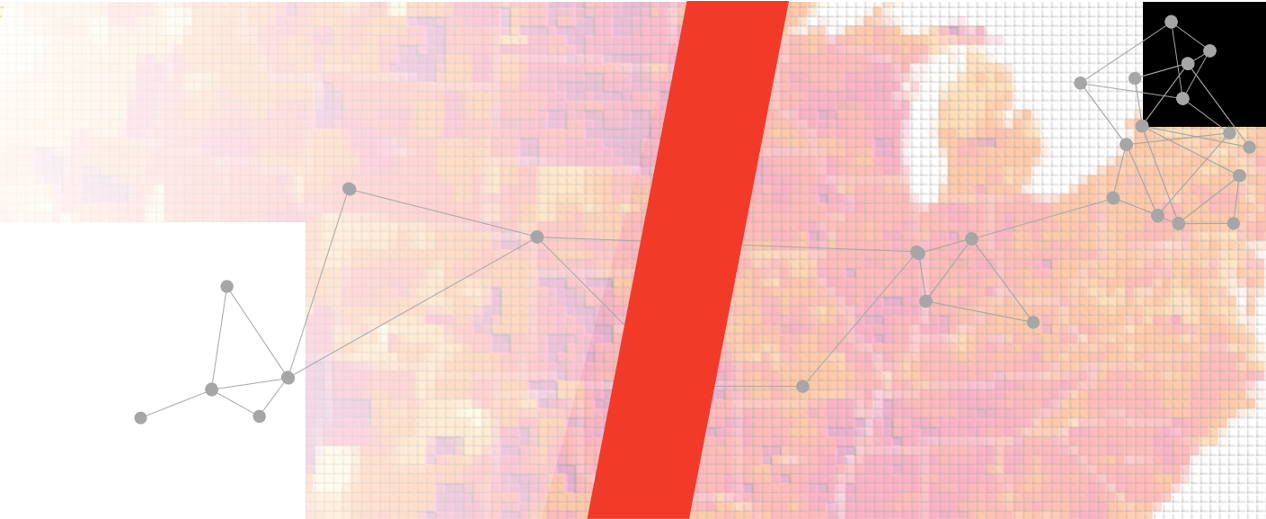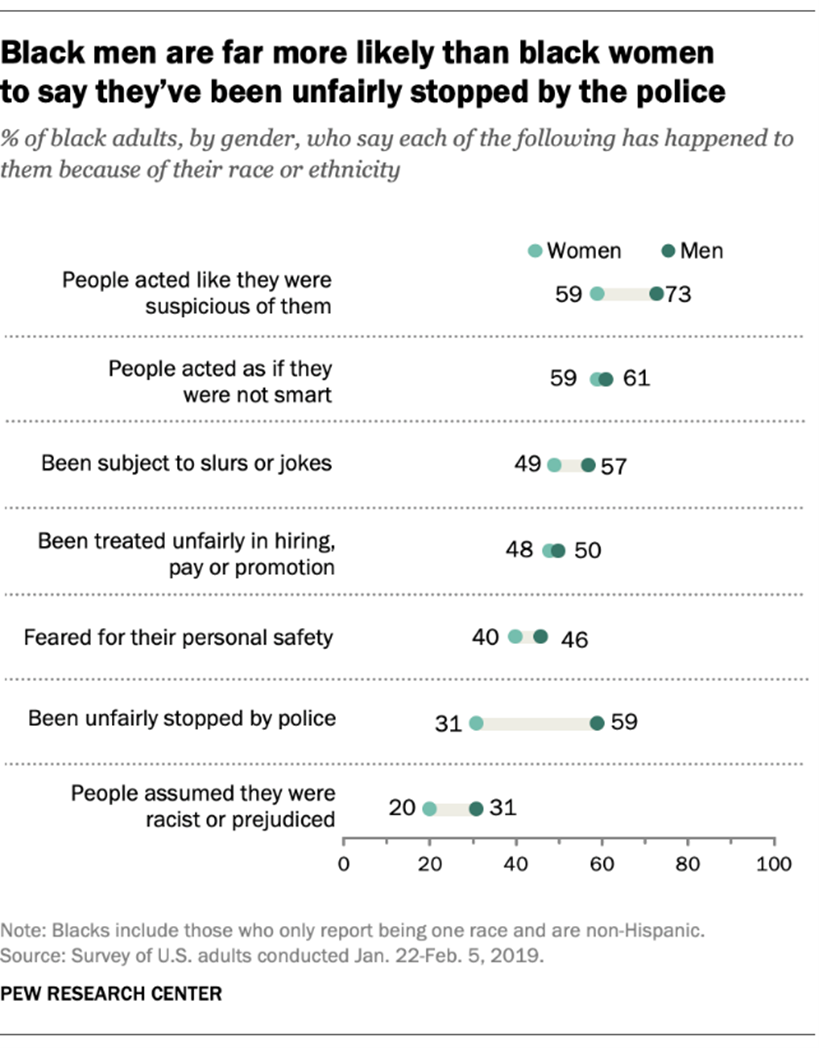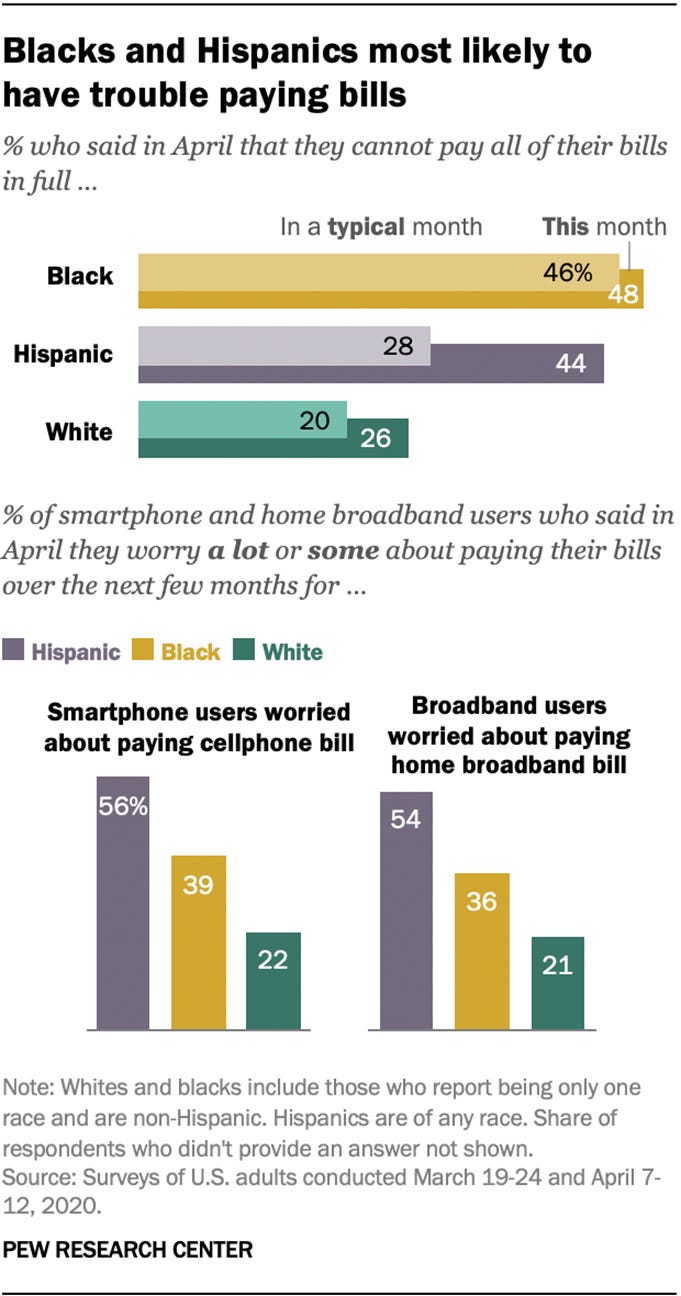Raccoons Destroyed My Lawn
Sometimes it takes a disaster before you decide to fix the problem
Greetings Interactors,
Welcome to week one and the inaugural weekly post. These posts are intended to be topical and relevant to current events, but also tied to the larger theme of the season and the month. It’s February and I’m looking at “The Geography of Whiteness”. It’s winter so the focus is human behavior. It’s also Black History Month, and I’m White. So, I’m looking at what it means to be ‘White’ and what is unique about ‘White’ behavior in ‘America’. Hopefully it helps us understand, appreciate, and wrestle with why there’s an American ‘Black History’ in the first place. What is it about the interaction between people and place that has led us here?
As interactors, you’re not only special individuals self-selected to be a part of an evolutionary journey, you’re also members of an attentive community. I welcome your participation. Interplace is a place for people to interact so please leave your comments below.
Now let’s go…
About this time last year, my family was saying goodbye to our Korean exchange student, Minseo, at the Seattle airport. COVID had just kicked in and she insisted on wearing a mask. I tried to talk her out of it, assuring her that not only was it not necessary, but not effective in curbing the disease. Sure enough, as we round the corner to escort her to the boarding cue, we see a line of mask wearing Asians. They knew the drill. But honestly, I thought they were overreacting.
My Twitter feed that week was full of smart people citing smart research pointing to the dubious efficacy of mask wearing. I was convinced. SCIENCE! Minseo politely ignored my misguided, deluded, naïve advice. Smart girl. Photos from her journey revealed she didn’t take her mask off until she was home.
One year later, I can see my self-righteous, paternalistic American arrogance and stupidity. At least I’m not alone. But who was I to tell someone accustomed to ‘masking up’ that it was unnecessary? Especially when the first case in America was just a mile from our house. And what made me so sure of American medical research? Well, those are both easy to answer with these exaggerated stereotypical American tropes:
“Things are diff’ernt here in ‘Merica. We don’t have them diseases here. And when we do, they don’t spread like them Asian cities. Plus, we have the best health care on the planet. U-S-A, U-S-A, U-S-A.”
Look at us now.
COVID likes to fly. It floats like a menacing mist in our midst. But it’s unlikely to survive a journey through the turbulent ocean air, so it uses us for that. Remember Guam last March and the US Navy ship? It’s still our top cluster case. Upon disembarking, the infected sailors overwhelmed that little island as the locals worked to contain it. The cruel irony is the ship that brought the virus is named after our most fervent colonial imperialist, Teddy Roosevelt.
Lazy little beasts that they are, COVID outsources all the work to their host. It hitched a ride to America, Europe, and then to Africa just as this rumor started flying: Africans, and their descendants, were somehow immune to the disease. What a brutal joke. Rates of COVID related deaths are two to four times higher for Black Americans than White. But the main African inheritance causing extreme death rates in America is not related to biological immunity at all – it’s the color of their skin. Our country has used race to shape how they interact with people and place.
Black people are more likely to live in dense areas, but also more densely packed homes – multi-generational households are more common among Black folks. Job loss also puts them at higher risk– all while dodging ‘stop and frisk’. A 2019 Pew Research study revealed “Black adults are about five times as likely as Whites to say they’ve been unfairly stopped by police because of their race or ethnicity (44% vs. 9%).”
Health insurance and sick leave? That would be nice. They barely make ends meet, try as they might. Last April Pew reported “Black (48%) and Hispanic adults (44%) were more likely than White adults (26%) to say they “cannot pay some bills or can only make partial payments on some of them this month.”
They already pay a healthy price: higher rates of diabetes, cardiovascular disease, and asthma – most of which brought on by their environment. They suffer air pollution, water pollution, and healthy food desolation. Less they get sick, and need emergency attention, they risk rejection on count of their pigmentation. Distrust of the medical community runs deep among the Black community. In 1932 the US government needed a treatment for syphilis, so they enrolled 600 Black men in a experiment in exchange for ‘free healthcare’. It was called the Tuskegee Experiment. Those who survived went insane, were blinded, or suffered medical ailments and trauma the rest of their lives. So for some, even today, a trip to the hospital can trigger memories of Tuskegee.
COVID shows no mercy, but White supremacy doesn’t either.
“It will probably be asked, Why not retain and incorporate the blacks into the state? Deep rooted prejudices entertained by the whites; ten thousand recollections, by the blacks, of the injuries they have sustained; new provocations; the real distinctions which nature has made; and many other circumstances, will divide us into parties, and produce convolutions which will probably never end but in the extermination of the one or the other race.” – Thomas Jefferson
We’ve heard a lot over the last year about predictive models. They’ve been hugely instrumental in getting a handle on the spread of this disease. But nobody predicted these uniquely cruel fates of our communities of Black, Indigenous, and People of Color. I don’t think it’s out of malice. Bias, yes. Including a bias for mathematical prudence.
Most epidemic predictors use algorithms that assume well-distributed populations. Imagine throwing our names into a nationwide hat, COVID gives it good shake and picks a name. Bummer for you. You’ve been infected. It just as easily could have been someone else. Turns out our populations aren’t as fairly distributed as names in a hat. And COVID is way too lazy to be shaking its own damn hat. Turns out that’s not all. Not every slip of paper in the hat is of equal size or shape and some may be more clumped together than others. Worse, the hat is rigged.
Elaborate schemes have pushed Black people into designated areas. With FDR’s 1934 New Deal reconstruction came an unreal obstruction – of life, liberty, and the pursuit of happiness. Money lenders conspired with city governments to isolate minorities across the country. Racial discrimination through spatial segregation – redlining. Effects of redlining exist to this day – smaller tax basis, more pot holes, fewer parks and trees, and way more police. Research out of Tufts University demonstrates “a common pattern in which predominantly Black neighborhoods are simultaneously over-policed when it comes to surveillance and social control, and under-policed when it comes to emergency services.” It all leads to more hazardous living conditions. Our cities are rigged. Deal again.
“Higher COVID-19 mortality, particularly at younger ages, is consistent with other health disparities in African-Americans: a fourfold greater probability of dying from complications during childbirth, 20 times greater chance of heart failure before age 50, and a four-year-shorter lifespan. The stress of living under the threat of racism appears to age Black bodies faster than White ones. The multiplication of many inequities over time results in greater disparity; Black income is 60 percent of White income, but Black wealth is only 10 percent that of Whites.” – Melanie Moses, Sante Fe Institute
There’s a modern proxy for redlining. They’re called zip codes. Zip codes are one of the strongest determinants and predictors of success, wealth, and health in America. This New York Times interactive tells the story best. Our places shape people – they either embrace or they cripple. But most epidemiologists don’t take into account variables like zip codes in their models. But they could.
David Krakauer, and the complexity researchers at the Sante Fe Institute, are formalizing ways to help by looking at the “interface between the power of mathematics in helping us understand the world and the hidden ethical suppositions …that go into our thinking about our mathematical models.” We know it’s possible to consider spatial correlations and systematic variability to yield a particular outcome. Just look at attempts to control polling places, budgeting, and police allocations.
You’d think we would have learned. In 1918, dwindling native populations that had previously survived disease were already forcefully isolated into reservations when the Spanish Flu hit. As a result, they were four times more likely to die from the flu. Today, in New Mexico, indigenous people are 17 times more likely to be diagnosed with COVID-19 than White people. And 10 times more like to die. Four hundred years later introduced diseases are still taking an unfair toll on the native occupants of this land.
1 This map shows the per capita cases from May 26, 2020 in the four states with the highest concentration of Black and Indigenous populations in America. The three neighboring counties in Arizona and New Mexico (Navajo county, Ariz., Apache County, Ariz., McKinley Country, NM.) have the highest concentrations of Indigenous people in the country and some of the highest death rates per capita. Learn more with recent data here.
Forced spatial concentration of Black, Indigenous, and People of Color into our most inhospitable corners of the country has been a gift to COVID. But diseases have a way of pointing out weakness in dominant systems that were there all along. They exploit them until more acute, undeniable symptoms emerge.
Take, for example, my backyard. I knew I had grubs eating the roots of my grass, I could see the brown spots. But it wasn’t until the raccoons dug up my lawn looking for midnight snacks that it became a problem. Grubby little varmints.
COVID has not only uncovered and exploited weaknesses in our biological systems, but our socioeconomic systems too. Racial inequality has been a weakness in our country since its origins. Thomas Jefferson admitted as much. And history has seen acute symptoms flare up before, long before COVID. But they have been mitigated, placated, or silenced like pain numbing medications masking a larger disease. Weaknesses in our dominant societal systems have not yielded acute symptoms, until COVID came to town. COVID-19 has exploited our weaknesses and the symptoms are not only acute they’re undeniable.
Some White folks have a way of arrogantly explaining away societal problems with clever theories, models, and proclamations. Guilty as charged. Sorry, Minseo. I was wrong. I should have learned from you how to interact with people in a pandemic place. I’ve certainly seen my fair share of data wielding over-confidence at Microsoft. I was probably that guy a few times myself.
But the power of mathematics and science is undeniable. It’s led to miraculous ways to observe and understand the world. It’s given us microscopes and the language to explain what we’re seeing through them. Without which we could not observe how this vicious little virus works such that we can mimic its behavior. And then bottle it up in a vaccine. Nature knows what it’s doing and we invented science and math to explain it. There’s nothing arrogant about that, nor in the gallant efforts to outwit this virus. And the next one.
It’s time we look through our ‘socioscope’ and use math and complexity science to tell us what we’re seeing in our society. The more we understand how this virus within our socioeconomic and political system works, the sooner we’ll find a cure.
Melanie Moses, Kathy Powers. Well-mixed models do not protect the vulnerable in segregated societies. June 2020. Data from the New York Times







Malice? Bias? I would suggest indifference. Interesting piece my friend.
Enjoyed this. Nicely written. Sounds like you've been on a similar journey to me in terms of learning this year. Enjoyed being pushed to think about the socio-spatial nature of life. Thx.